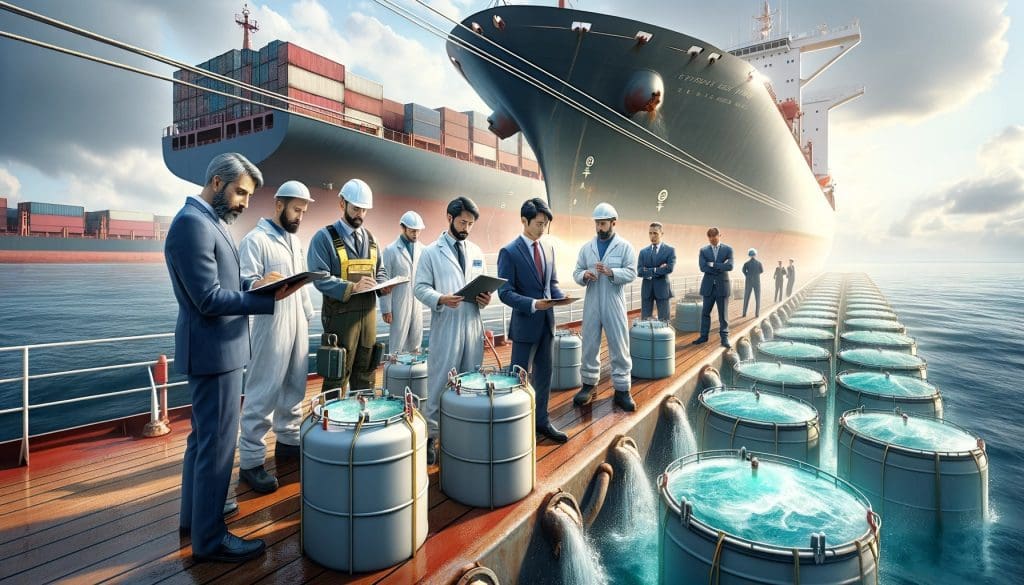Navigating Ballast Water Regulations: Ensuring Maritime Environmental Compliance
The management and regulation of ballast water have become a cornerstone of maritime environmental protection, representing a critical intersection between maritime law, environmental sustainability, and global shipping practices. The legal landscape surrounding ballast water management is as vast and complex as the oceans themselves, encompassing an array of regulations, guidelines, and practices aimed at safeguarding marine ecosystems from the inadvertent spread of invasive species.
Ballast Water Management is a process that involves the control and handling of ballast water and sediments in ships. Ballast water is crucial for the safe and efficient operation of modern shipping, providing balance and stability to unladen ships. However, it also poses a significant environmental threat as it can transfer invasive aquatic species across marine ecosystems, disrupting local biodiversity and causing extensive ecological and economic damage.
In the United States, the management of ballast water is governed by various federal and state regulations. The National Invasive Species Act (NISA) of 1996 was a key piece of legislation, authorizing the regulation of ballast water to prevent the spread of aquatic nuisance species. The act recognizes ballast water discharge as a primary pathway for invasive species to enter U.S. waters. Subsequently, the U.S. Coast Guard and the Environmental Protection Agency (EPA) have played pivotal roles in setting and enforcing regulatory standards.
In 2008, the EPA introduced the Vessel General Permit (VGP) system, regulating vessel discharges, including ballast water. This permit required vessels to adopt Best Management Practices (BMPs) for controlling ballast water discharges but initially did not include numeric pollutant discharge limits. The Clean Boating Act of the same year exempted recreational vessels from the requirement to obtain NPDES discharge permits but mandated BMPs for their discharges.
A significant advancement came in 2012 with the Coast Guard Standards for Ballast Water Discharge Final Ruling. This ruling established concrete requirements for ballast water treatment systems and began approving these systems in 2016. The regulations apply to all non-recreational vessels equipped with ballast tanks and set standards for the allowable concentration of living organisms in ballast water discharge.
These regulations are not static but evolve in response to technological advancements and environmental needs. For instance, the EPA published its latest VGP in 2013, setting numeric ballast water discharge limits for commercial vessels 79 feet in length or greater. The limits are expressed as the maximum acceptable concentration of living organisms per cubic meter of ballast water.
Navigating these regulations requires comprehensive understanding and vigilance from maritime operators. Non-compliance can result in legal challenges, including fines and penalties. However, more than just a legal obligation, compliance with ballast water management regulations reflects a commitment to environmental stewardship and the protection of global marine ecosystems.
Moreover, the international dimension of shipping and maritime law adds another layer of complexity. International regulations, such as those set by the International Maritime Organization (IMO), also play a significant role. The U.S. regulations often intersect with international standards, requiring a delicate balance and sometimes leading to challenges in compliance for global shipping operators.
In essence, the effective management of ballast water is critical in preventing the transfer of invasive species, protecting marine biodiversity, and maintaining the health of global marine ecosystems. It exemplifies the crucial role of legal frameworks in environmental conservation, highlighting how law can be a powerful tool in the fight against ecological degradation.
As the maritime industry continues to evolve, so too will the legal and regulatory landscape surrounding ballast water management. It remains imperative for all stakeholders in the maritime sector – from ship operators to environmental advocates – to stay informed and engaged with these ongoing developments. The future of our oceans and marine life depends on our collective efforts to uphold and advance these essential environmental protections.
Sources:
- Ballast water regulation in the United States – Wikipedia
- Riviera – News Content Hub – What we know about changes to ballast water regulations in US waters
Disclosure: Generative AI Created Article




















